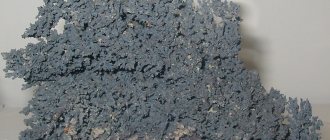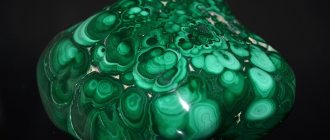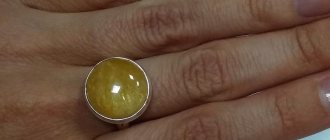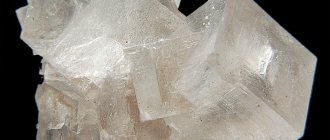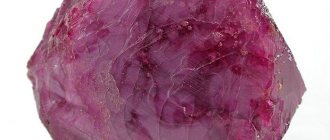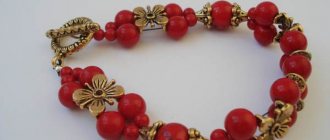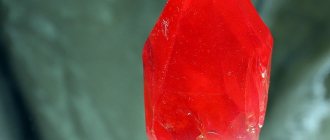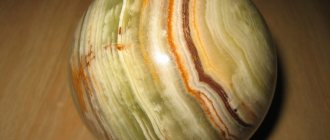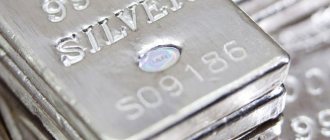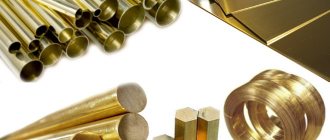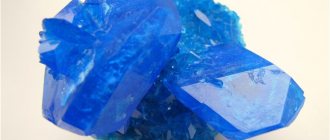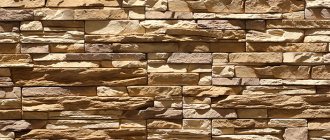People have long learned to melt hard metals and make tools, weapons, jewelry, and dishes from them. Copper is one of the first metals to be mastered. It was easy to process after strong heating. This material was used to make dishes and jewelry. When people learned about the physical and chemical properties of this metal, it began to be introduced into various areas of industry.
Conditions and prices for receiving copper: https://citylom.ru/priem-medi
Copper
What is
Copper is a pinkish metal with a golden-metallic luster. Element No. 29 of the Mendeleev periodic table. International designation: Cu (Cuprum).
Pure metal is soft, so it is often used with impurities. Plastic: stretches to micron diameters.
In air it becomes covered with a film, acquiring a yellowish-red tint. Thin plates are greenish-blue when exposed to light.
According to the official classification, it is classified as a heavy non-ferrous metal. This group also includes lead, zinc, tin, and nickel.
History of the name of the chemical element copper
Copper (English Copper, French Cuivre, German Kupfer) is one of the first metals that man began to use for technical purposes. The periods of use of copper and bronze marked entire eras of cultural development of mankind called the Copper Age and the Bronze Age. The oldest products, apparently made from native copper, found in Egypt, date back to the millennium BC. e. Later, the Egyptians extracted copper from its oxide ores (turquoise, malachite, etc.). The ores were smelted at 1083 o C in primitive furnaces using blast. There could be no question of smelting iron in the same way (mp 1530 o C). Around the 2nd - 3rd century. Copper smelting was carried out on a large scale not only in Egypt, but also in Mesopotamia, the Caucasus and other countries of the ancient world. The huge number of ancient copper and bronze items discovered by archaeologists raises doubts that copper was smelted only from oxide ores. Later sources (X - XI centuries) indicate the use of sulfur ores for copper mining. For example, Theophilus’s essay “On the Various Arts” describes the preliminary operation of ore processing - oxidative roasting of pieces of ore on fires (burning sulfur). In the X - XII centuries. BC. copper and bronze tools and weapons are beginning to be replaced by iron ones. However, this did not prevent copper from retaining its important technical significance to this day.
The Latin name for copper Cuprum (ancient Aes cuprium, Aes cyprium) comes from the name of the island of Cyprus, where already in the 3rd century. BC e. There were copper mines and copper smelting was carried out. Strabo calls copper chalkos from the name of the city of Chalkis on Euboea. From this word came many ancient Greek names for copper and bronze objects, blacksmithing, blacksmithing and casting. The second Latin name for copper Aes (Sanskrit, ayas, Gothic aiz, German erz, English ore) means ore or mine. Proponents of the Indo-Germanic theory of the origin of European languages derive the Russian word copper (Polish miedz, Czech med) from Old German smida (metal) and Schmied (blacksmith, English Smith). Of course, the relationship of the roots in this case is undoubtedly, however, in our opinion, both of these words are derived from the Greek. mine, mine independently of each other. From this word came related names - medal, medallion (French medaille). The words copper and copper are found in the most ancient Russian literary monuments. Alchemists called copper Venus; in more ancient times the name Mars is found.
Story
Copper is one of the first metals that humanity dealt with. This was facilitated by the advantages: high prevalence, availability, relatively low melting point.
People appreciated the benefits of copper eight thousand years ago.
The Copper Age began immediately after the Stone Age:
- Copper artifacts dug up in the territory of modern Turkey are recognized as the oldest. These are beads and decorative overlays.
- Cutting tools and utensils were made from metal.
- The history of the discovery of copper mines in Rus' begins in the Urals two thousand years before the new era. Then there were the Caucasus, Altai, Siberia.
- Industrial processing using bronze began in the 14th century. Cannons and bells were cast from the alloy.
The Tsar Bell and the Tsar Cannon were cast from bronze.
It is assumed that the metal is named after the island of Cyprus. Copper deposits were discovered here back in the 3rd century BC, and the population mastered copper smelting.
M. Vasmer’s “Etymological Dictionary of the Russian Language” links the origin of the Russian term copper with the ancient German root smid – blacksmith, metal.
Introduction
Metals of the copper subgroup have low chemical activity, so they are partly in the form of chemical compounds and partly in free form, especially gold.
In distant geological eras, copper, apparently, was found only in the form of sulfur compounds - chalcopyrite (or) and chalcose. This can be explained by the fact that copper has a fairly high chemical affinity for sulfur, and sulfides are currently the most common copper minerals. At high temperatures, for example, in zones of volcanic activity, under the influence of excess oxygen, copper sulfides turned into oxides.
At temperatures below 10,000C, copper oxide is formed, which occurs in nature in small quantities.
Indigenous (metallic) copper apparently formed in nature when partially oxidized sulfur ores were heated to high temperatures. One can imagine that after the earthquakes of the great eruptions, the oxidized copper minerals were buried under a thick layer of rock and heated by geothermal energy. There was an interaction between oxides and sulfides.
Similar processes occur during copper smelting at metallurgical plants. These natural “smelters” melted huge amounts of copper: the largest nugget found weighed 420 tons. To a lesser extent, interaction of some metal oxides with sulfides, for example in the area of some of the Kuril Islands, appears to still exist.
Some other copper minerals have also been recovered from the oxidized ores. For example, the hydrogenation of copper oxide and the formation of basic carbonates occurred under the influence of moisture and carbon dioxide.
We don't see these processes in the laboratory because they are slow. In a natural “laboratory” time frames of several thousand years are very short. Later, under the influence of the pressure of the underlying rock and some warming, the basic copper carbonate was compressed and turned into an amazingly beautiful mineral - malachite. Polished malachite is especially beautiful. It can be colored from light green to dark green. The transitions of color tones are bizarre and create a fantastic pattern on the surface of the stone.
Transfer of insoluble copper sulfide compounds into solution can be achieved by reacting solutions of iron(III) sulfates.
Iron sulfate solutions, as mentioned above, are formed in nature under the action of oxygenated water on pyrite. These processes are slow in nature and are still ongoing.
Copper is a component of more than 198 minerals, of which only 17 are industrially important. The most important for copper production are chalcopyrite CuFeS2 (also known as copper fracture), chalcocite Cu2S (copper luster), cawellite CuS, boronite Cu5FeS4 (mottled copper ore). Sometimes local copper is also found. The distribution of copper in the earth's crust is 4.7 * 10-3 wt.% (1015 - 1016 tons).
Reserves, production
Global quantities of copper ore are estimated at one billion tonnes (explored). The presence of half is confirmed. Scientists believe that the earth's crust hides another three billion tons of copper ore.
Native copper
Countries on all continents have rich reserves:
- America – Chile, Canada, USA.
- Asia – Kazakhstan, Iran.
- Africa – South Africa, Zambia, Zaire.
Russia accounts for 3% of world reserves. The deposits are concentrated in the Urals. The main producer is the Norilsk Nickel concern.
Ore is mined by open or closed methods, depending on the depth of occurrence.
The annual global ore production is 15-20 million tons.
Mining and extraction of copper salts from natural deposits
About 15% of all copper ores are processed hydrometallurgically—the crushed ore is treated with a solvent that dissolves the copper. Ores containing copper oxide are susceptible to attack by dilute sulfuric acid.
Compared to many other oxides found in ores, copper oxide is relatively soluble. Metallic copper is separated from the solution by electrolysis.
If copper is present in the ore as sulfide, it can be turned into solution by treating the ore with a solution of ferrous sulfate.
Physico-chemical parameters
Copper is a metal with typical external characteristics (brilliance, smoothness) and crystal lattice structure. Endowed with high electrical and thermal conductivity. According to these physical properties, it is second only to silver.
| Name, symbol, number | Copper/Cuprum (Cu), 29 |
| Atomic mass (molar mass) | 63.546(3)a. e.m. (g/mol) |
| Electronic configuration | [Ar] 3d10 4s1 |
| Atomic radius | 128 pm |
| Chemical properties | |
| Covalent radius | 117 pm |
| Ion radius | (+2e) 73 (+1e) 77 (K=6) rm |
| Electronegativity | 1.90 (Pauling scale) |
| Electrode potential | +0.337 V/ +0.521 V |
| Oxidation states | 3, 2, 1, 0 |
| Ionization energy (first electron) | 745.0 (7.72) kJ/mol (eV) |
| Thermodynamic properties of a simple substance | |
| Density (at normal conditions) | 8.92 g/cm³ |
| Melting temperature | 1356.55 K (1083.4 °C) |
| Boiling temperature | 2567 °C |
| Ud. heat of fusion | 13.01 kJ/mol |
| Ud. heat of vaporization | 304.6 kJ/mol |
| Molar heat capacity | 24.44 J/(K mol) |
| Molar volume | 7.1 cm³/mol |
| Crystal lattice of a simple substance | |
| Lattice structure | cubic face-centered |
| Lattice parameters | 3.615 Å |
| Debye temperature | 315 K |
| Other characteristics | |
| Thermal conductivity | (300 K) 401 W/(m K) |
| CAS number | 7440-50-8 |
The main chemical property of metal assessed by humans is zero corrosion. Copper is chemically inactive and does not oxidize under standard conditions.
Cu isotope properties Copper Cuprum
| Nuclide symbol | Z(p) | N(n) | Isotope mass (a.mu.) | Half-life (T1/2) | Spin and parity of the nucleus |
| Excitation energy | |||||
| 52Cu | 29 | 23 | 51,99718 | 3+ | |
| 53Cu | 29 | 24 | 52,98555 | 300 ns | 3/2- |
| 54Cu | 29 | 25 | 53,97671 | 75 ns | 3+ |
| 55Cu | 29 | 26 | 54,96605 | 40 ms | 3/2- |
| 56Cu | 29 | 27 | 55,95856 | 93 ms | 4+ |
| 57Cu | 29 | 28 | 56,949211 | 196.3 ms | 3/2- |
| 58Cu | 29 | 29 | 57,9445385 | 3.204 s | 1+ |
| 59Cu | 29 | 30 | 58,9394980 | 81.5 s | 3/2- |
| 60Cu | 29 | 31 | 59,9373650 | 23.7 min | 2+ |
| 61Cu | 29 | 32 | 60,9334578 | 3.333 h | 3/2- |
| 62Cu | 29 | 33 | 61,932584 | 9,673 min | 1+ |
| 63Cu | 29 | 34 | 62,9295975 | stable | 3/2- |
| 64Cu | 29 | 35 | 63,9297642 | 12,700 h | 1+ |
| 65Cu | 29 | 36 | 64,9277895 | stable | 3/2- |
| 66Cu | 29 | 37 | 65,9288688 | 5,120 min | 1+ |
| 67Cu | 29 | 38 | 66,9277303 | 61.83 h | 3/2- |
| 68Cu | 29 | 39 | 67,9296109 | 31.1 s | 1+ |
| 68mCu | 721.6 keV | 3.75 min | 6- | ||
| 69Cu | 29 | 40 | 68,9294293 | 2.85 min | 3/2- |
| 69mCu | 2.7418 MeV | 360 ns | 13/2+ | ||
| 70Cu | 29 | 41 | 69,9323923 | 44.5 s | 6- |
| 70m1Cu | 101.1 keV | 33 s | 3- | ||
| 70m2Cu | 242.6 keV | 6.6 s | 1+ | ||
| 71Cu | 29 | 42 | 70,9326768 | 19.4 s | 3/2- |
| 71mCu | 2.756 MeV | 271 ns | 19/2- | ||
| 72Cu | 29 | 43 | 71,9358203 | 6.6 s | 1+ |
| 72mCu | 270 keV | 1.76 µs | 4- | ||
| 73Cu | 29 | 44 | 72,936675 | 4.2 s | 3/2- |
| 74Cu | 29 | 45 | 73,939875 | 1.594 s | 1+ |
| 75Cu | 29 | 46 | 74,94190 | 1.224 s | 3/2- |
| 76Cu | 29 | 47 | 75,945275 | 641 ms | 3 |
| 76mCu | 0 keV | 1.27 s | 1 | ||
| 77Cu | 29 | 48 | 76,94785 | 469 ms | 3/2- |
| 78Cu | 29 | 49 | 77,95196 | 342 ms | |
| 79Cu | 29 | 50 | 78,95456 | 188 ms | 3/2- |
| 80Cu | 29 | 51 | 79,96087 | 100 ms | |
| 81Cu | 29 | 52 | > 632 ns | ||
| 82Cu | 29 | 53 | > 636 ns | ||
Copper in nature
In nature, two manifestations of the element have been identified - nuggets and components of compounds with other elements.
Copper nugget
Most often these are compounds: oxides, sulfides, bicarbonates. The most common raw material is copper pyrite.
Copper gives deep blue, cyan, greenish shades to malachite, turquoise, chrysocolla, and other minerals of the jewelry and decorative segment.
How did man become acquainted with copper?
first acquaintance with copper occurred
through nuggets, which they took for stones and tried to process in the usual way, hitting them with other stones. The pieces did not break off from the nuggets, but they were deformed and could be given the required shape.
Interesting materials:
Which category needs a scooter license? What motor on a boat can you use without a license? What legal act determines the procedure for training the population in the field of civil defense? Which body has the right to carry out state registration of rights to real estate and transactions with it? What basic law defines the legal basis for conscription? What is the fine if you don’t have a driver’s license? What is the fine if you forgot your license at home Ukraine 2022? What is the penalty for repeated driving without a license? What is the fine for loss of license in Ukraine? What is the deadline for replacing rights?
Methods of obtaining
The metal content in ores does not exceed 2%. Therefore, they are enriched before smelting. There are two ways to obtain copper: pyro- and hydrometallurgical.
Pyrometallurgical
A multi-level process that includes the following steps:
- Enrichment. Ores are enriched by flotation. Copper particles suspended in water “cling” to air bubbles, which carry them to the surface. The output is a concentrated powder with 12-36% copper.
- Burning. The procedure is indicated for poor (9-24% copper) copper ores and con sulfur. When calcined with oxygen, the proportion of sulfur drops by half.
- Fuse. Shaft or reverberatory type furnaces are loaded with pieces of ore or powder concentrate at 1452°C. Copper matte is obtained.
- Purge. In converters it is exposed to compressed air. Sulfides and iron are oxidized, almost pure (98.51 - 99.51%) blister copper plus iron and other valuable components in trace quantities are formed.
- Refining. The rough product is sent for refining - with flame, then with electrolyte. Impurities are removed with gases. After the first stage, the metal is purified to 99.51%, after the final stage – to 99.96%.
The method is applied to 9/10 of the extracted raw materials.
Hydrometallurgical
It consists of treating raw materials with low concentration dissolved sulfuric acid and isolating the copper metal product.
The method is optimal for ores with a minimum percentage of copper. Removal of other components is not provided.
Sulfates
CuSO4*5H2O, called copper sulfate, has the greatest practical value. Produced by dissolving copper in concentrated sulfuric acid. Since copper is a low activity metal and is in the voltage range after hydrogen, hydrogen does not evolve.
Copper sulfate is used in copper electrolysis production, in agriculture to control plant pests and diseases, and to extract other copper compounds.
Carbonates for metals of the copper subgroup are not typical and are rarely used in practice. Only basic copper carbonate, which occurs naturally, is of some importance for copper production.
A characteristic property of doubly charged copper ions is their ability to combine ammonia molecules into complex ions.
The copper ion can be opened by tapping its ammonia brine solution. The appearance of an intense blue-blue color is associated with the formation of a complex copper ion.
Copper colors the flame a rich green color.
The qualitative analysis carried out gives reason to believe that the alloy contains copper, zinc, cadmium, iron and lead. Therefore, this alloy is brass.
Alloys
The range of copper alloys with other components includes dozens of items.
Copper alloys and their applications
They are used more often than pure metal because they reduce the disadvantages inherent in pure metal. That is, they make the product stronger, more stable, and cheaper.
Copper connections are divided into two groups:
- Bronze - with tin.
- Brass – with zinc.
In addition to these main alloying components, the compound contains aluminum, nickel, bismuth, titanium, silver, gold, and non-metallic elements.
History of the name of the chemical element copper
Copper (English Copper, French Cuivre, German Kupfer) is one of the first metals that man began to use for technical purposes.
The periods of use of copper and bronze marked entire eras of cultural development of mankind called the Copper Age and the Bronze Age. The oldest products, apparently made from native copper, found in Egypt, date back to the millennium BC. e. Later, the Egyptians extracted copper from its oxide ores (turquoise, malachite, etc.). The ores were smelted at 1083 o C in primitive furnaces using blast. There could be no question of smelting iron in the same way (mp 1530 o C). Around the 2nd - 3rd century. Copper smelting was carried out on a large scale not only in Egypt, but also in Mesopotamia, the Caucasus and other countries of the ancient world. The huge number of ancient copper and bronze items discovered by archaeologists raises doubts that copper was smelted only from oxide ores. Later sources (X - XI centuries) indicate the use of sulfur ores for copper mining. For example, Theophilus’s essay “On the Various Arts” describes the preliminary operation of ore processing - oxidative roasting of pieces of ore on fires (burning sulfur). In the X - XII centuries. BC. copper and bronze tools and weapons are beginning to be replaced by iron ones. However, this did not prevent copper from retaining its important technical significance to this day. The Latin name for copper Cuprum (ancient Aes cuprium, Aes cyprium) comes from the name of the island of Cyprus, where already in the 3rd century. BC e. There were copper mines and copper smelting was carried out. Strabo calls copper chalkos from the name of the city of Chalkis on Euboea. From this word came many ancient Greek names for copper and bronze objects, blacksmithing, blacksmithing and casting. The second Latin name for copper Aes (Sanskrit, ayas, Gothic aiz, German erz, English ore) means ore or mine. Proponents of the Indo-Germanic theory of the origin of European languages derive the Russian word copper (Polish miedz, Czech med) from Old German smida (metal) and Schmied (blacksmith, English Smith). Of course, the relationship of the roots in this case is undoubtedly, however, in our opinion, both of these words are derived from the Greek. mine, mine independently of each other. From this word came related names - medal, medallion (French medaille). The words copper and copper are found in the most ancient Russian literary monuments. Alchemists called copper Venus; in more ancient times the name Mars is found.
The server is being created with the support of the Russian Foundation for Basic Research. Copying of materials and posting on other Web sites is not permitted. Web design: Copyright (C) I. Minyailova and V. Minyailov Copyright (C) Faculty of Chemistry, Moscow State University Write a letter to the editor
Source
Areas of application
The properties of the metal determine its use in various fields. The main consumer is the industrial complex.
Industry
Metal and alloys are used by the following industries:
- Electrical engineering, radio electronics. Cables (power, others), wires. Winding in transformers. Heat exchange devices (heating radiators, air conditioners, computer coolers, laptop heat pipes).
- Instrumentation, mechanical engineering. Parts and machine components are made from alloys of copper with zinc, tin, and aluminum. Without it, it is impossible to create galvanic cells and batteries.
- Pipes. For transporting steam, water, gas. In the energy sector, shipbuilding, for domestic needs.
Copper heat pipe cooling system in a laptop
In Japan, copper pipelines are recognized as earthquake-resistant, which is vital for this country.
Copper pipes
Construction
Roofs made of copper sheets are environmentally friendly; they do not need to be painted, since moisture and weather disasters are not scary. Service life – up to 100 years.
Medicine
The characteristics of the metal as an antiseptic and astringent are in demand in medicine.
It is a component of eye drops and mixtures for the treatment of burns.
Copper door handles and other surfaces are an attribute of medical institutions.
Copper compounds suppress the swine flu virus.
Jewelry
Jewelers use copper-based alloys.
Copper ring
Red or rose gold is a conglomerate of the noble metal with copper.
Its amount in the composition determines the final shade:
- 25% – pink;
- 50% – red.
These types of gold are the most beloved by jewelers. Copper makes products stronger, while simultaneously reducing the cost.
The second popular jewelry alloy is cupronickel (copper + nickel).
Other industries
- Copper oxide is the basis of cuprate, used in superconductors.
- Brass is used to make cartridges for rifles and artillery.
- Nickel silver is used to mint coins, create interior decorations, and cutlery.
- Copper is involved in the synthesis of chlorophyll. It is always added to mineral fertilizers for plants.
Composition and structure
Copper is a combination of a huge number of crystals of silver, calcium, gold, lead, and nickel. The metals that cuprum consists of are distinguished by ease of processing and relative ductility.
The unit cell of the structural lattice is cubic in shape. Each cell represents a compound of 4 atoms.
During mining, the ore is saturated with a huge amount of impurities. They affect the technical characteristics of the remelted metal and its structure. Common impurities:
- Oxygen is an impurity, the content of which in the composition can reach 0.008%. When exposed to high temperatures, the oxygen content quickly decreases.
- Bismuth is a component that negatively affects the technical characteristics of the finished metal. The permissible amount in the composition is up to 0.001%.
- Manganese has virtually no effect on the properties of cuprum.
- Nickel - reduces thermal conductivity.
- Arsenic - does not affect the properties of the remelted metal. Arsenic neutralizes the negative effects of bismuth, oxygen, and antimony on the final material.
- Tin - enhances thermal conductivity.
- Antimony - reduces thermal and electrical conductivity. Permissible content in the composition is up to 0.05%.
- Sulfur, selenium - reduce the plasticity index if their amount in the composition exceeds 0.001%.
- Zinc has virtually no effect on physical and chemical properties.
- Phosphorus is the main deoxidizing agent. Improves mechanical properties.
The percentage of impurities during production may decrease or increase.
Copper ore
Meaning for humans
Copper is inherent in the human body initially:
- Participates in the formation of red blood cells, collagen, elastin.
- Activates the endocrine system, slows down the aging of the body.
- Its deficiency is fraught with a slowdown in protein metabolism. This leads to pathologies in the development of the skeleton and blood composition.
It is found in many foods. Beef liver, oysters, sesame seeds, cocoa powder, black pepper, and buckwheat are rich in copper. And also nuts (hazelnuts, walnuts, cashews, peanuts, almonds).
Physical properties
Copper has a golden color with a slight pink tint. It is a soft, malleable metal that can be drawn and worked into different products. It has high thermal conductivity and electrical conductivity.
Properties:
- the required temperature of copper for boiling is 2567 degrees;
- Melting of copper occurs at 1084 degrees.
Withstands well:
- ultraviolet;
- temperature changes;
- has corrosion resistance.
Copper can be magnetized against the direction of the magnetic field. Due to its unique properties, it is used in all areas of industry and production. The alloys are durable and of high quality, have low coefficients of friction, and are not exposed to environmental influences.
Warning
The metal contains isotopes: two stable ones plus two dozen unstable ones. Although the half-life of the “long-liver” is less than 2.5 days, the material is toxic.
Therefore, the use of copper is controlled.
In Russia at the federal level (national standard, federal Code of Rules) the following is regulated:
- Production and use of copper water, steam and gas pipes.
- Amount of copper in drinking water.
1 liter of drinking water should not contain more than 1 mg of copper.
Excess copper components cause poisoning of the body. Copper utensils are not suitable for cooking.
A quarry in which copper ore was extracted by open pit mining becomes a source of toxic compounds.
Interesting Facts
Since the use of copper is very wide, there are, accordingly, a lot of interesting facts related to copper. It’s worth starting with the fact that the price of pure copper on the world market is not so low. In 2014, 1 ton of copper on the world market was valued at 7,000 US dollars. Due to such a high price, the number of thefts of copper items has increased. For example, in Germany, the railway company Deutsche Bahn AG suffered losses of 14 million euros due to the theft of copper grounding cables.
Another interesting point is that the first mirrors invented by man were made of copper. The copper was rubbed (polished) until a reflection on the surface of the copper was visible. Also in the field of application, it is worth noting that most of the coins produced around the world contain copper. Another interesting fact is that copper, like iron and aluminum, can be recycled without losing its properties.
The biological component of copper can also be noted. In large quantities it is toxic, but in small quantities it is an integral part of the existence of the human body. In various states, the human body contains about 150 mg of copper. The normal daily intake of copper for a person weighing 75 kg is 2 mg.
Prices
The world price of copper is set on the London Metal Exchange. It depends on demand, determined by the state of the economy.
And fluctuates accordingly:
- By the beginning of 2008, the psychological mark of $8,000 per ton was overcome.
- Six months later it was already $+940, which became a record in the entire history of the exchange.
- At the beginning of 2011, the level was set at $10,000.
Then there was a recession. For 2022, a ton of copper is trading at $8,057. The economic slowdown due to the coronavirus pandemic has had an impact.
Copper and living organisms
Copper is one of the vital trace elements. Participates in the process of photosynthesis and nitrogen absorption in plants, promotes the synthesis of sugar, proteins, starch, vitamins and enzymes. In the absence or deficiency of copper in plant tissues, the chlorophyll content decreases, the leaves turn yellow, the plant stops bearing fruit and may die. Copper is usually introduced into the soil in the form of five-year sulfate - copper sulfate CuSO4 * 5H2O. In significant quantities, like many other copper compounds, it is toxic, especially to lower organisms. Polish scientists have discovered that in waters where copper is present, carp are large. In ponds and lakes where there is no copper, the fungus develops quickly and infects carp. However, in small doses, copper is absolutely essential for all living things.
Of the living creatures of the world, small amounts of copper contain squid, cuttlefish, oysters and some other shellfish. In the blood of crustaceans and cephalopods, copper, part of their respiratory pigment, hemocyanin (0.33-0.38%), plays the same role as iron in the blood of other animals. When combined with oxygen in the air, hemocyanin turns blue (which is why the snail's blood is blue), and when it provides oxygen to the tissues, it changes color. In animals at a higher stage of development and in humans, copper is mainly located in the liver. The daily requirement of the human body is about 0.005 grams of this element. If copper is not sufficiently supplied in food, a person develops anemia and weakness.
One method of copper extraction also involves biological processes. At the end of the 19th century in America, copper mines were buried in the state of Utah: After they decided that the ore reserves had already been exhausted, the mine owners flooded them with water. When the water was pumped out two years later, it contained 12 thousand tons of copper. A similar incident occurred in Mexico, where 10,000 tons of copper were excavated from abandoned mines in just one year. It turned out that among many types of bacteria there are those for which sulfur compounds of certain metals are a popular treatment. Since copper is naturally associated with sulfur, these microbes are indifferent to copper ores. Since they oxidize water-insoluble sulfides, microbes convert them into readily soluble compounds, and this process occurs very quickly. For example, 5% of copper is leached from chalcopyrite within 24 days during normal oxidation, and in experiments with bacteria, 80% of this element was extracted within 4 days.
